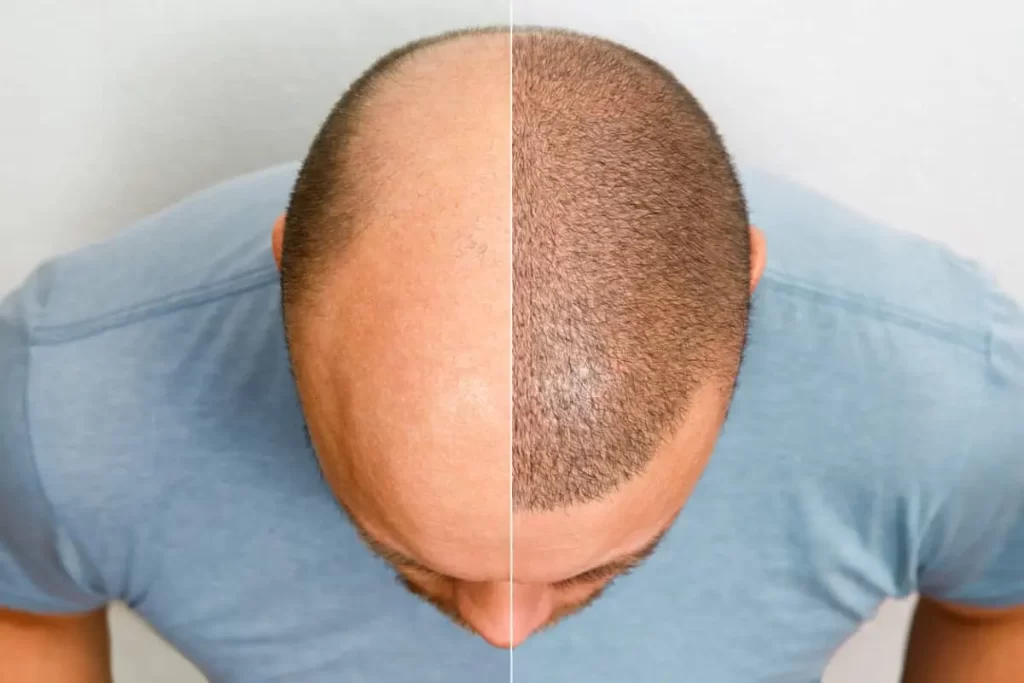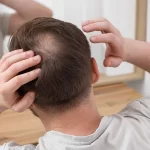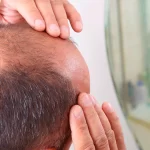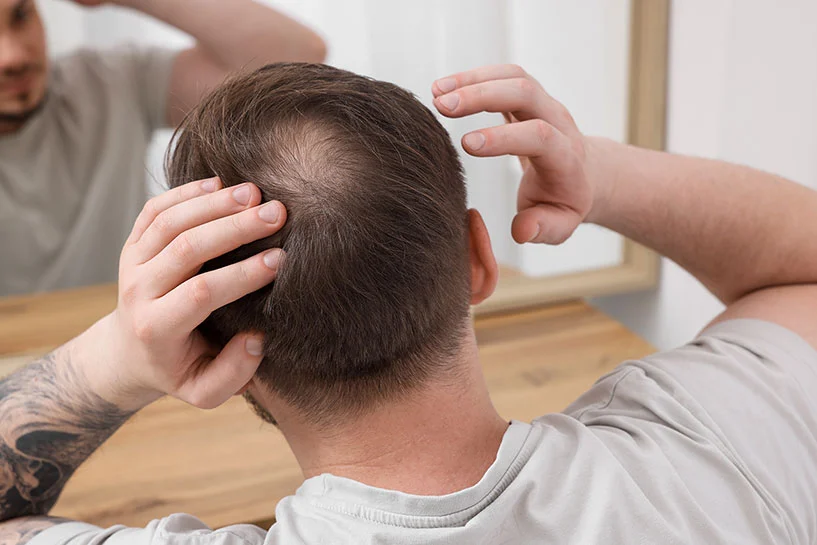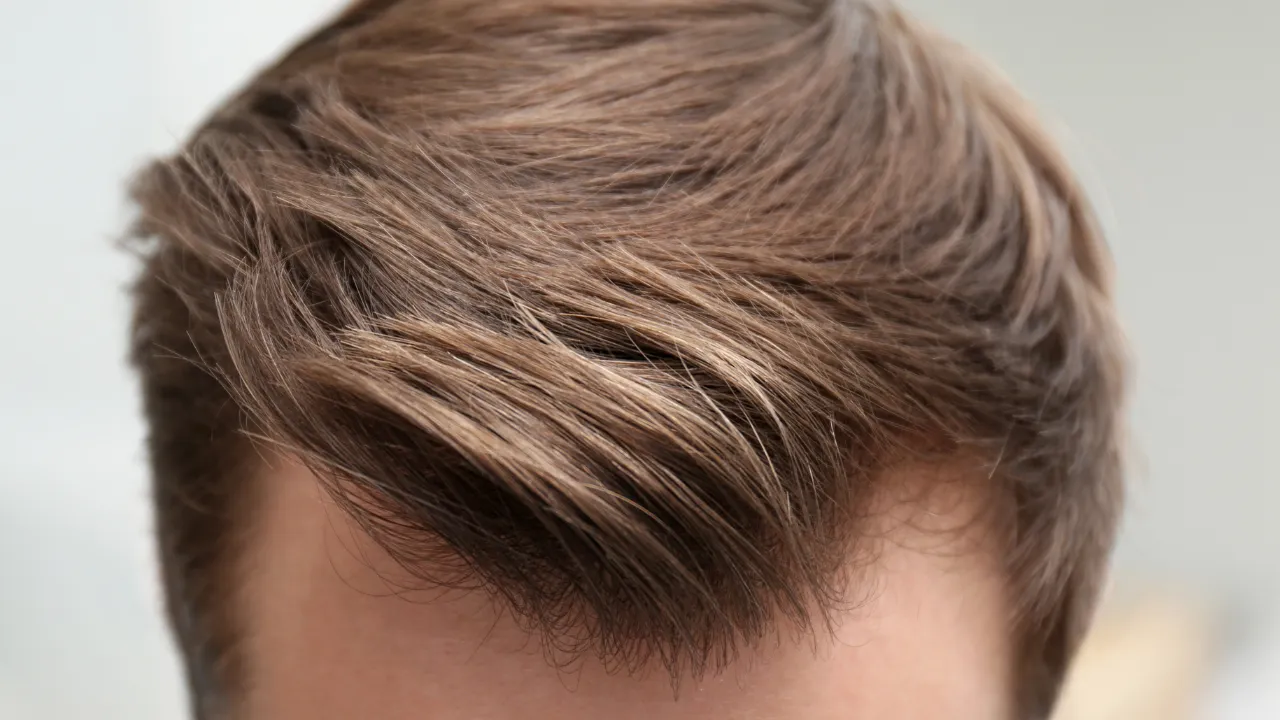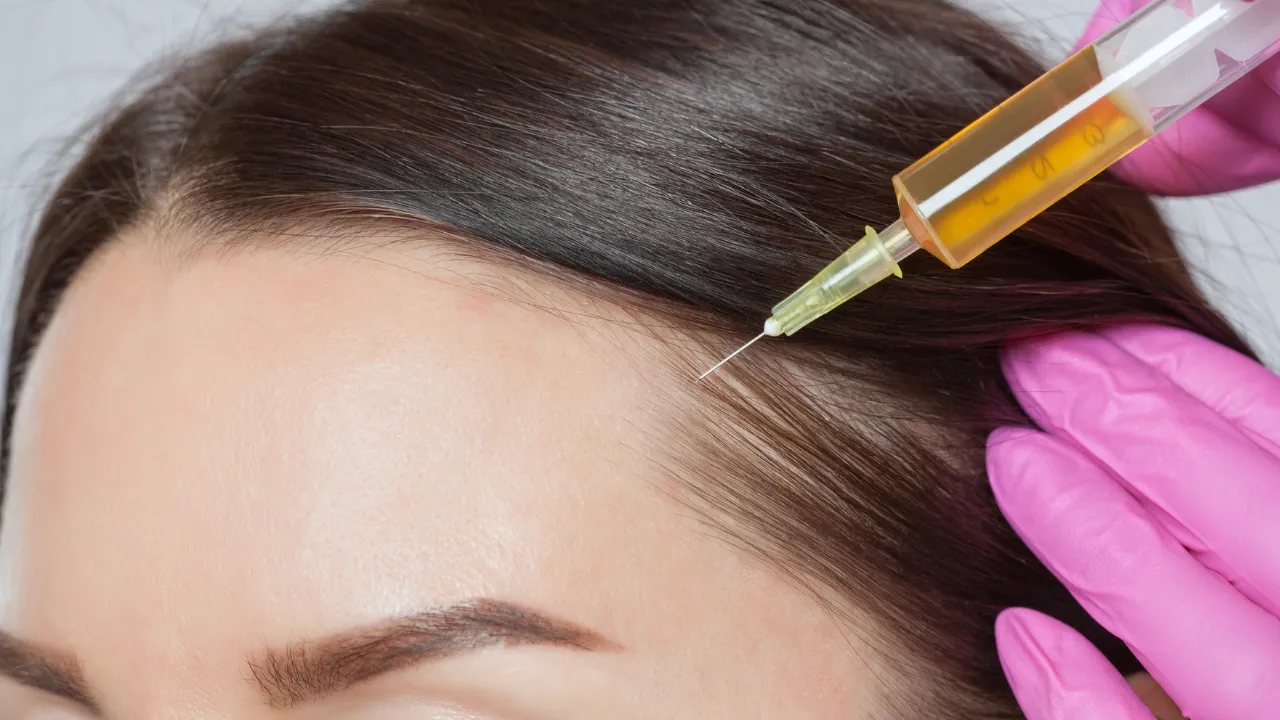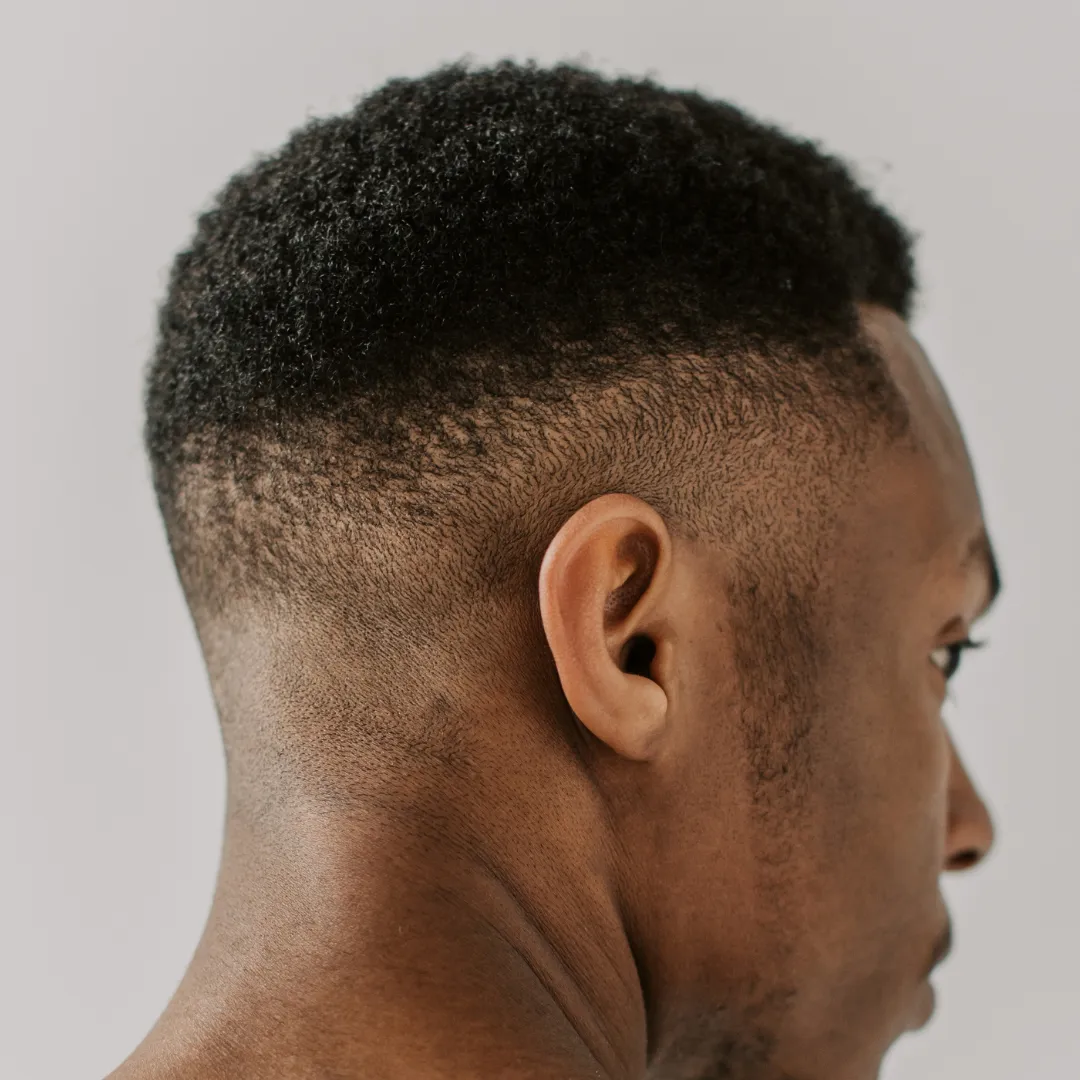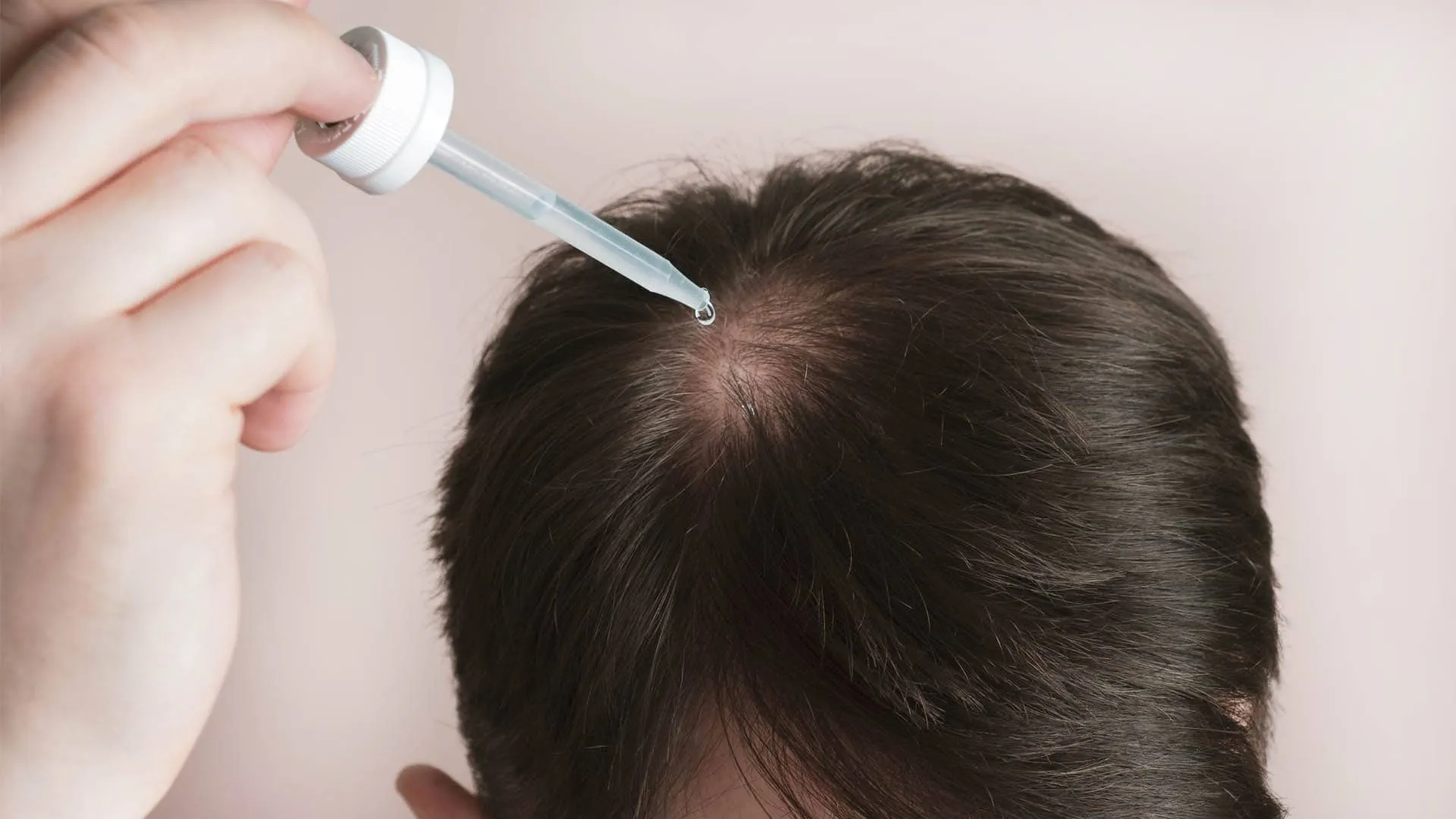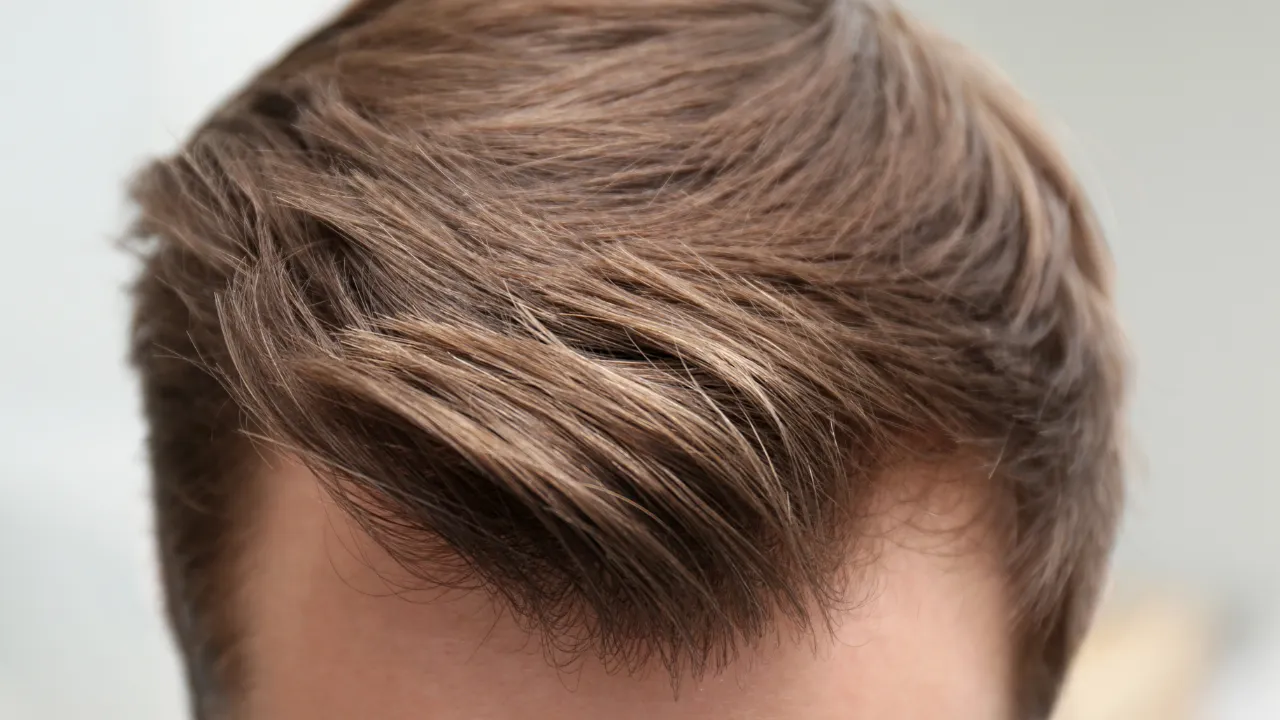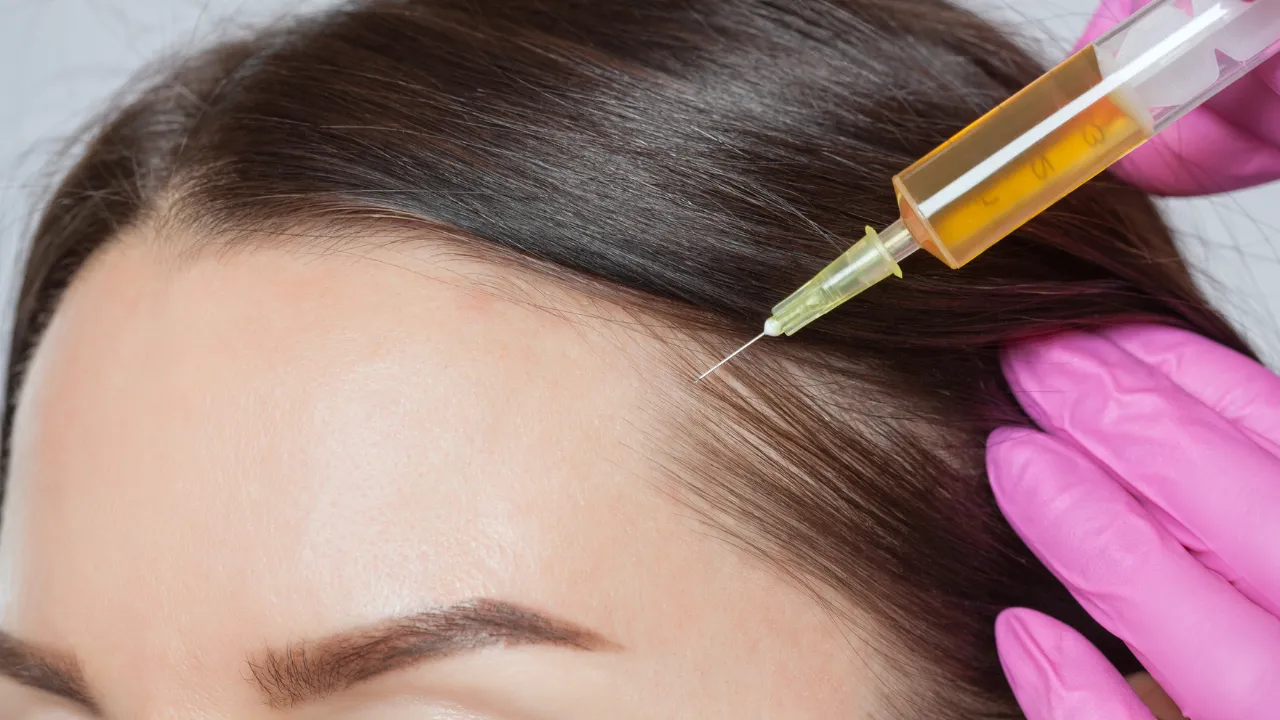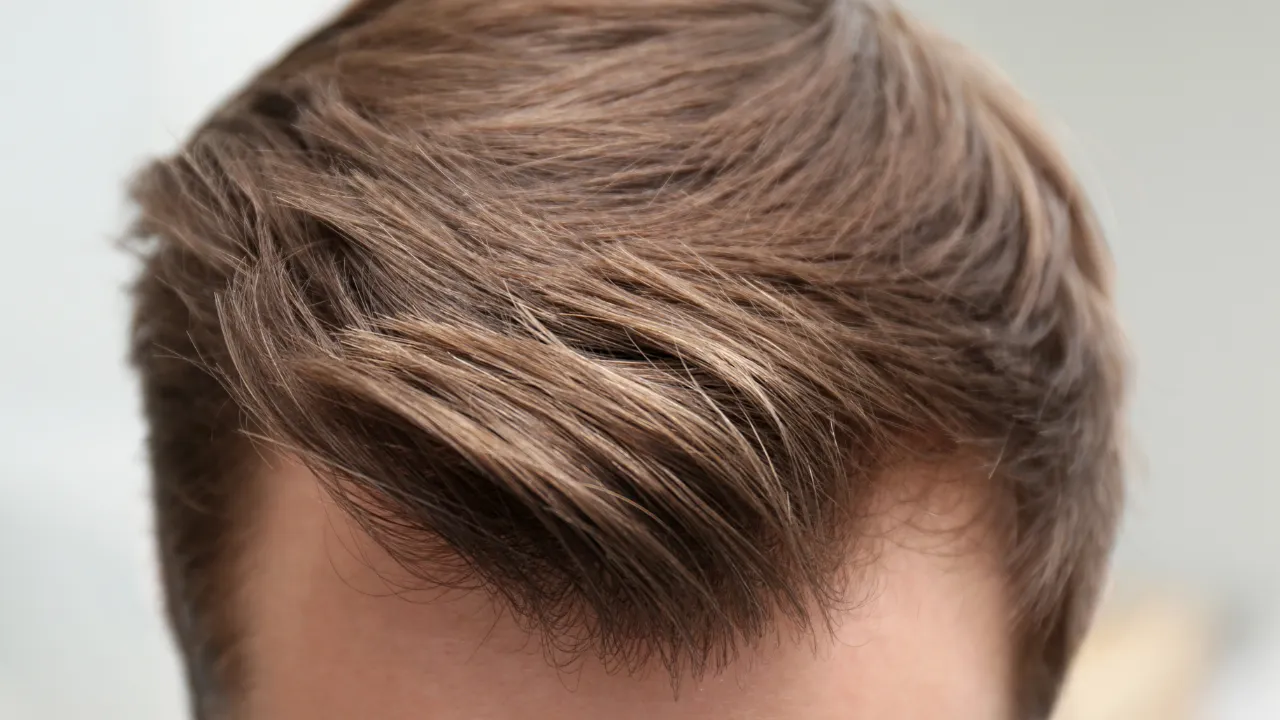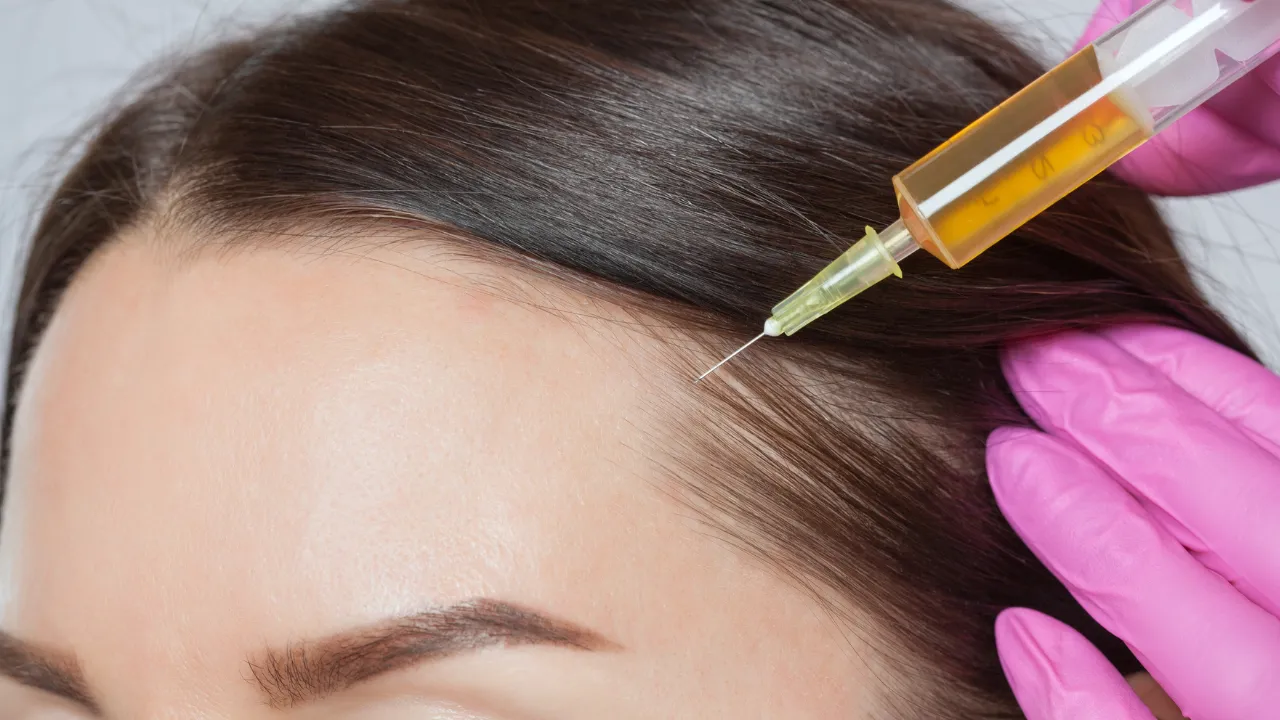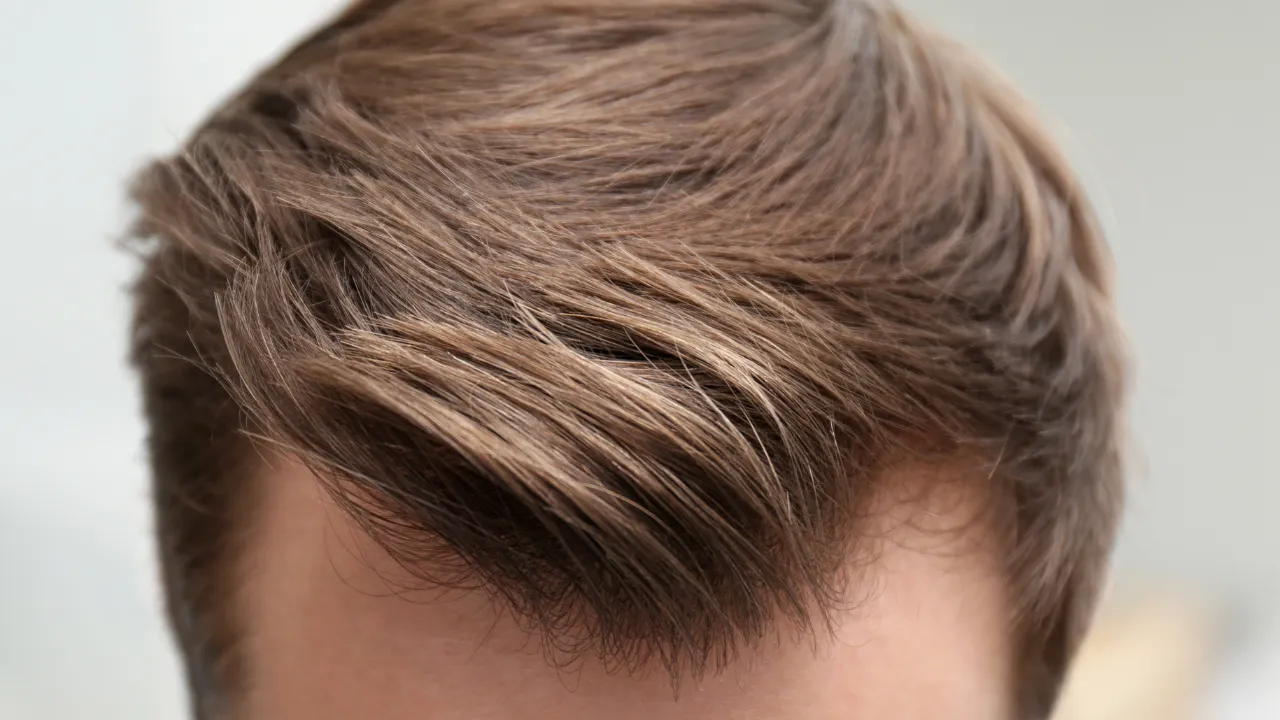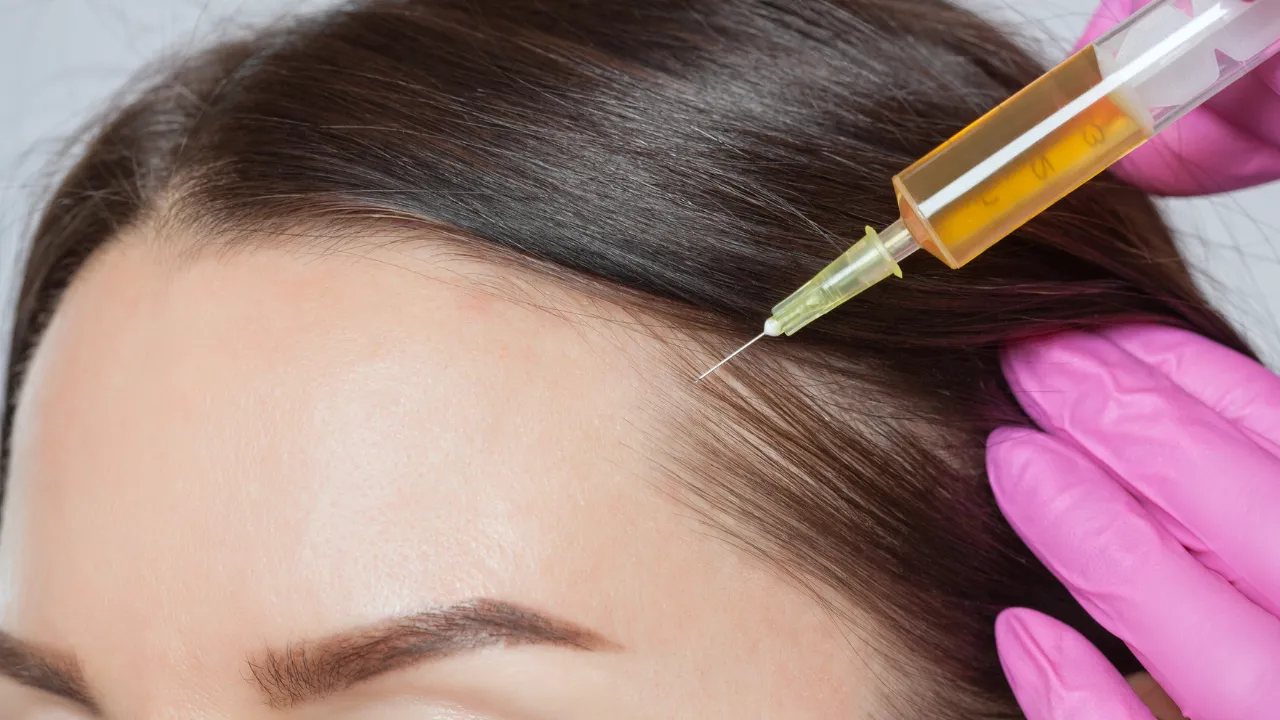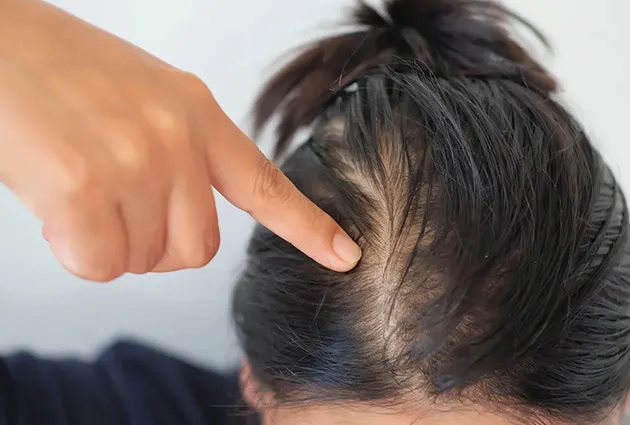Table of Contents
ToggleAt Kopelman Hair, we specialize in advanced solutions for men and women considering a bald hair transplant. Many wonder if it’s possible to restore hair on a completely bald scalp and achieve natural-looking results. Let’s explore what’s possible and whether a bald hair transplant could be the right choice for you.
Key Takeaways
- A bald hair transplant is possible for many patients who have sufficient donor hair on their scalp or other parts of the body.
- Individuals with completely bald heads may face limitations on full coverage, but options such as body hair transplants or scalp micropigmentation can still enhance their appearance.
- Costs for bald hair transplants vary widely, typically ranging from $5,000 to over $20,000, depending on technique and extent of hair loss.
- Dr. Kopelman emphasizes realistic expectations and offers personalized solutions tailored to each patient’s unique hair loss pattern and individual goals.
- Patients should consider both the medical risks and emotional benefits when deciding on hair transplantation procedures, as hair restoration significantly impacts their confidence and overall well-being.
Who Can Get a Bald Hair Transplant?
Can a Bald Person Have a Hair Transplant?
A bald person can still be a candidate for hair transplantation if their donor hair and scalp health are suitable. Dr. Kopelman, an experienced hair transplant specialist, carefully reviews each case to ensure optimal results.
Many patients assume that baldness rules them out. Still, options often exist for partial restoration, especially for those with healthy hair remaining on the sides of the scalp or in other areas.
Are Transplants Possible if Fully Bald?
A hair transplant for a fully bald solution is challenging because the scalp lacks sufficient hair for grafting. A completely bald hair transplant is only possible if follicles from a donor area, like the sides of the scalp or parts of the body, are available.
For totally bald hair transplant cases, realistic expectations are crucial. Dr. Kopelman helps patients understand what coverage is achievable and how the transplantation process works.
It’s essential to understand that while hair transplantation procedures can enhance your appearance, achieving full coverage may not be feasible in cases where patients cover a fully bald scalp. Dr. Kopelman ensures patients understand these limits to avoid disappointment and to help plan realistic goals.
Can You Be Too Bald or Too Far Gone for Surgery?
Patients sometimes feel too far gone for hair transplant surgery. Severe baldness, including cases of male pattern baldness or androgenetic alopecia, doesn’t always mean surgery is impossible.
Factors such as donor hair density, scalp condition, and existing hair health are important considerations. A consultation with Dr. Kopelman, a skilled hair transplant surgeon, helps create a tailored plan.
Can You Be Too Bald for a Hair Transplant Male?
Men often worry they’re too bald for surgery, especially those with advanced male pattern baldness. High Norwood levels mean small donor zones. A fully bald male patient may need creative strategies, such as spreading grafts, to achieve a natural look. Dr. Kopelman discusses realistic outcomes to help men understand the potential results.
What If You Have No Donor Hair?
If you lack donor hair, a bald transplant isn’t possible using traditional hair transplantation procedures. Alternatives include:
- Body hair transplants
- Scalp micropigmentation
- Hair systems
- Medications like finasteride or minoxidil
Dr. Kopelman explores these alternatives so patients leave with solutions, even for conditions like alopecia areata, where hair transplant surgery may not be suitable.
Who Should Not Get a Hair Transplant?
Some people may not be suitable candidates for hair transplantation, including those with:
- Active scalp diseases
- Blood clotting disorders
- Low donor hair supply
- Alopecia areata
- Unrealistic expectations
Dr. Kopelman explains these concerns during consultations.
Where Do You Fall on the Norwood Scale?
The Norwood scale helps determine hair loss severity and transplant feasibility:
- Norwood 1-2: Minimal recession
- Norwood 3-4: Moderate hairline loss
- Norwood 5-6: Extensive baldness
- Norwood 7: Near total baldness
Dr. Kopelman uses this scale for tailored planning in hair transplantation procedures.
Techniques for Bald Hair Transplants
FUE vs FUT for Bald Patients
Bald hair transplants use Follicular Unit Extraction (FUE) or Follicular Unit Transplantation (FUT).
- FUE removes single follicles from areas of the scalp with tiny scars.
- FUT takes a strip for more hair grafting.
FUT often suits completely bald cases for better density. Dr. Kopelman helps choose the best option.
Body Hair Transplants as an Option
In totally bald cases, body hair from the chest, back, beard, or legs may help. These hairs differ from scalp hair. Dr. Kopelman explains the pros and limits.
Scalp Micropigmentation as an Alternative
Scalp micropigmentation creates a shaved appearance without the need for surgery. It offers fast results, no recovery time, and lower cost. Dr. Kopelman offers this option for individuals who do not have donor hair.
Bald Hair Transplant Results
Bald Hair Transplant Before and After
Bald hair transplant before and after photos show how even small improvements help. While full density isn’t always possible in completely bald hair transplant cases, patients often gain confidence. Dr. Kopelman shares examples to help patients visualize the transplantation process and expected results.
Real Patient Case Studies and Reviews
Patients at Kopelman Hair share experiences after hair transplant surgery. Many achieve significant changes, while others prefer subtle results. Reviews often praise Dr. Kopelman’s honest, careful approach.
Examples:
- A Norwood 5 patient chose a conservative hairline.
- Another used body hair for density.
- One combined transplant and micropigmentation.
Signs of Successful Growth and Success Rates
Successful hair transplantation procedures depend on:
- Donor hair quality
- Scalp condition
- Post-op care
- Health of existing hair
Growth typically begins within 3-4 months, with improvements sustained for up to a year. Survival rates range from 80% to 95% under Dr. Kopelman’s care.
Emotional Impact and Confidence After Surgery
A bald hair transplant isn’t just physical—it’s emotional too. Many patients report feeling younger and more confident after restoring even small areas of hair. Benefits include:
- Improved self-esteem
- Feeling more comfortable socially
- Greater satisfaction with appearance
Dr. Kopelman supports patients through this emotional journey.
Cost and Risks of Bald Hair Transplants
Cost for Fully Bald Hair Transplant
A hair transplant fully bald patient may spend $5,000 to over $20,000. Body hair procedures cost more due to complexity. Dr. Kopelman offers clear estimates.
Typical costs:
- Scalp hair transplant: $5,000 – $20,000+
- Body hair transplant: $8,000 – $25,000
- Scalp micropigmentation: $1,500 – $5,000
Are There Risks or Limits?
Hair transplantation procedures carry risks such as:
- Infection
- Scarring
- Shock loss of existing hair
- Numbness
- Uneven density
Completely bald hair transplant cases face unique limits because donor hair may be scarce.
FAQs About Bald Hair Transplants
Can You Get a Hair Transplant if You’re Bald?
Yes, many bald patients can still undergo hair transplant surgery if donor hair exists. Dr. Kopelman emphasizes personalized evaluations for each case.
Is a Bald Hair Transplant Painful?
Hair transplant surgery is well tolerated. Patients receive local anesthesia, and discomfort is mild. Dr. Kopelman ensures comfort and guides pain management.
How Long Does Healing Take?
Healing varies:
- Scabs fall off in 7-10 days.
- Redness fades in weeks.
- New growth appears in 6-12 months.
Dr. Kopelman provides clear recovery guidelines.
Recovery Timeline After a Bald Hair Transplant
Typical healing timeline:
- Days 1-3: Swelling and scabs.
- Days 4-7: Scabs fall naturally.
- Week 2: Redness improves.
- Months 1-3: Shedding phase.
- Months 4-6: New growth starts.
- Months 6-12: Density increases.
Can You Combine Treatments?
Many individuals combine options such as PRP therapy, scalp micropigmentation, or medications. Dr. Kopelman personalizes multi-treatment plans to optimize hair transplantation procedures.
How Many Grafts Does a Bald Hair Transplant Need?
A bald hair transplant often needs 3,000 to 5,000 grafts or more. Dr. Kopelman determines graft counts based on patient goals and hair transplantation procedures.
Are Bald Hair Transplant Results Permanent?
Transplanted hair is usually permanent. Non-transplanted hair may still thin over time due to conditions like androgenetic alopecia. Dr. Kopelman advises on long-term care to protect existing hair.
Does Insurance Cover a Bald Hair Transplant?
Most bald hair transplantation procedures are cosmetic and not covered by insurance. Dr. Kopelman offers precise cost details for planning.
If you’re considering a bald hair transplant or exploring your options, schedule a consultation with Dr. Kopelman to discuss a personalized plan.


